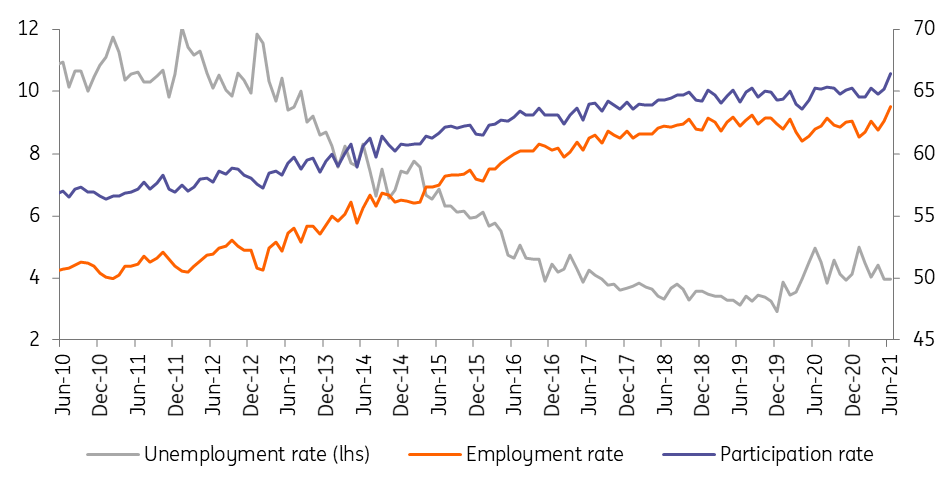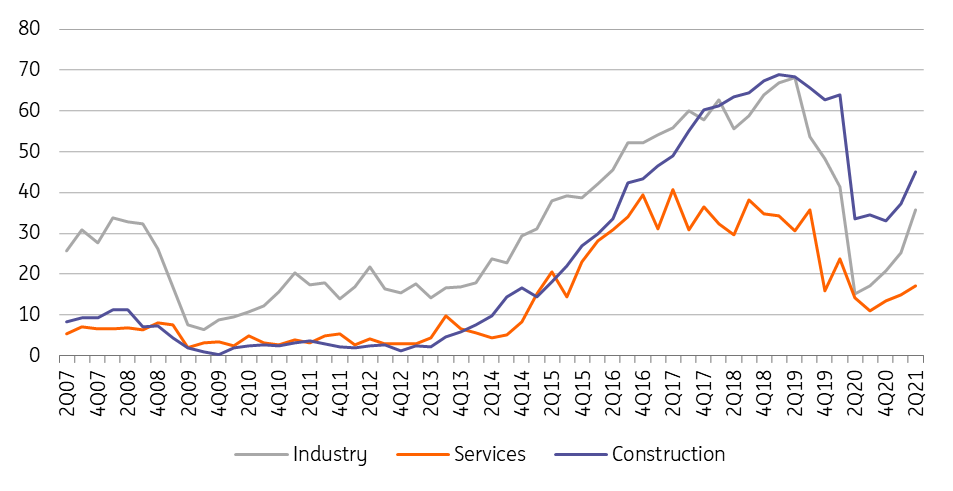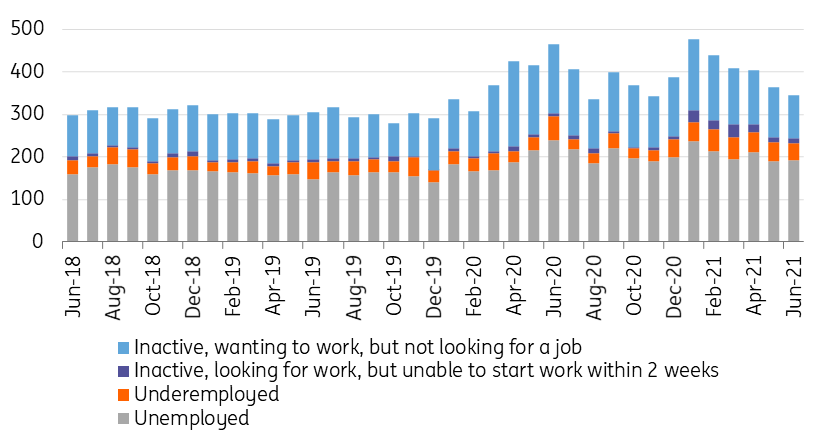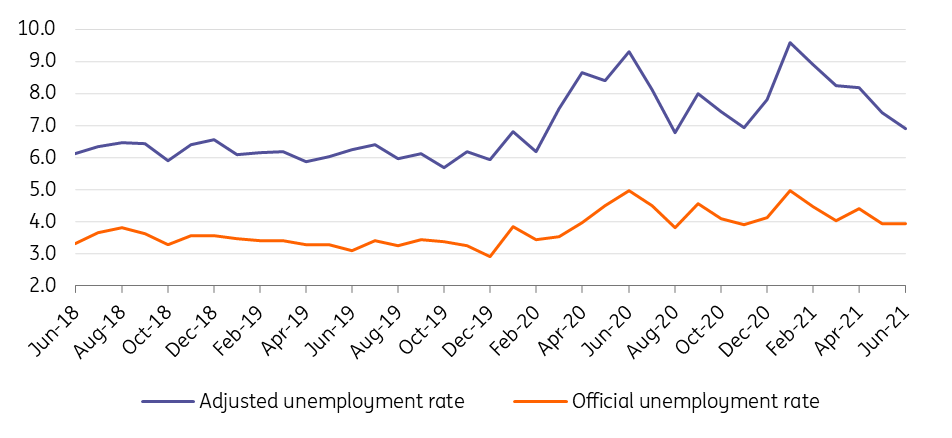Hungary: Labour shortages increase
The reopening in June brought a significant increase in participation and employment, thus the unemployment rate remained stable. The quickly depleting potential labour force adds to the already elevated pipeline price pressures
The outcome of the unemployment rate in June did not come as much of a surprise for us. According to fresh data from the Hungarian Central Statistical Office (HCSO), the unemployment rate was 4% in the first month of the summer, which does not show a meaningful change compared to the May data. At the same time, the unemployment rate decreased by 1.0ppt on a yearly basis.
At first sight, knowing that Hungary almost fully reopened its economy by June, the stabilisation of the unemployment rate – rather than a significant improvement – could look strange. In our view, there are two possible explanations for this, and it's likely that a combination of these led to an unchanged unemployment rate.
First, not only did employment expand from May to June, but the number of economically active people (labour market participants) also increased to a similar extent. In other words, as a result of the reopening, a larger number of people, about 90,000, reappeared in the Hungarian labour market, with 85,000 of them able to find a job right away, while 4,000 people added to the number of unemployed in June.
Labour market trends (%)

Our second reason, in addition to the increased participation and willingness to work, is that more and more companies, be it in the service sector, industry or construction are complaining about a lack of qualified labour and are having a hard time filling job openings. This problem is most acute within the hospitality and tourism sectors. Based on anecdotal evidence, a lot of workers have decided to look for a job outside of these sectors due to uncertainty surrounding the pandemic and low wages. So despite the significantly increasing labour demand, supply side constraints are coming into play. Amid these difficulties in filling vacancies, the pace of improvement in employment will be slow.
Share of companies complaining about labour shortages in Hungary (%)

In our view, the labour shortage is expected to worsen in the coming months if pandemic-related restrictions do not return and the economy can function smoothly. This is backed up by the significant decrease in potential labour reserves. This group contains unemployed and underemployed as well as inactives who are looking for work, but unable to start work within two weeks, and inactives, who want to work but are not looking for a job in an active manner.
Potential labour reserves within the 15-74 age group ('000)

According to the HCSO, potential labour reserves fell below 350,000 people in June, which according to our calculations corresponds to an adjusted unemployment rate of 6.9%. This is already close to the pre-crisis (2018–2019) average of 6.3%. Just as a quick remainder, these two years were characterised by exceptional labour shortages and record low unemployment rates.
The official and adjusted unemployment rates (%)

Against this backdrop, employers will find themselves in an increasingly challenging situation, so the unemployment rate may be able to improve only at a moderate pace in the near future. In the absence of further restrictions, the pre-crisis record low unemployment rate may be well within reach by the end of this year. At the same time, wage pressures in the economy may strengthen further, energising the economy and adding to inflation.
This publication has been prepared by ING solely for information purposes irrespective of a particular user's means, financial situation or investment objectives. The information does not constitute investment recommendation, and nor is it investment, legal or tax advice or an offer or solicitation to purchase or sell any financial instrument. Read more
Download
Download snap